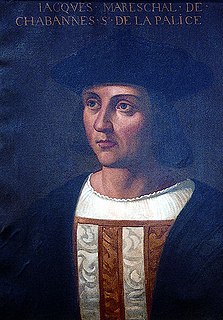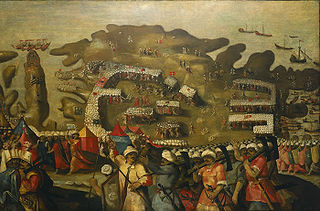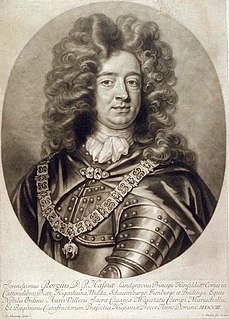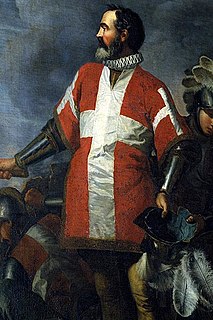This article has multiple issues. Please help improve it or discuss these issues on the talk page . (Learn how and when to remove these template messages)
|

Don Álvaro de Sande (1489 – 20 October 1573) was a Spanish nobleman and military leader.
He was born in Cáceres, the son of Don Juan de Sande, second señor de Valhondo. Don Alvaro de Sande participated in numerous campaigns in the Spanish Army, including the Conquest of Tunis (1535), the conquest of Düren and Roermond in 1543, and the grand Battle of Mühlberg in 1549, in which Sande distinguished himself. When the German Campaign ended, Sande fought in the Italian War of 1551–1559 against France in the Tercios of Milan.

Cáceres is the capital of Cáceres province, in the autonomous community of Extremadura, Spain. In 2014 its population was around 96,000. The municipio has a land area of 1,750.33 km2 (675.81 sq mi), the largest geographically in Spain. The medieval walled city has been declared a UNESCO World Heritage Site. It is also on the Via de la Plata path of the Camino de Santiago.

The Conquest of Tunis in 1535 was an attack on Tunis, then under the control of the Ottoman Empire, by the Habsburg Empire of Charles V and its allies.

Düren is a town in North Rhine-Westphalia, Germany, between Aachen and Cologne on the river Rur.
Despite his advanced age, he participated in 1560 in the Battle of Djerba against the Turks, which ended in disaster. After the sea battle, the surviving soldiers took refuge in the fort they had completed just days earlier. When Giovanni Andrea Doria managed to escape in a small vessel, de Sande became commander of the force in the fort, which was soon attacked by the combined forces of Piyale Pasha and Turgut Reis. After a siege of three months, the garrison surrendered and 5,000 prisoners, including Alvaro de Sande, were carried back to Istanbul. After 2 years, de Sande was ransomed for 60,000 escudos and returned to Spain. The Holy Roman Empire's ambassador to Constantinople, Ogier de Busbecq, assisted the Spanish prisoners held by the Turks and was involved in securing de Sande's release. The two men travelled together as far as Vienna in the autumn of 1562. [1] De Sande fought against the Turks again at the Siege of Malta in 1565.

The Battle of Djerba took place in May 1560 near the island of Djerba, Tunisia. The Ottomans under Piyale Pasha's command overwhelmed a large joint Christian Alliance fleet, composed chiefly of Spanish, Papal, Genoese, Maltese and Neapolitan forces. The allies lost 27 galleys and some smaller vessels as well as the fortified island of Djerba. This victory marked perhaps the high point of Ottoman power in the Mediterranean Sea.

Giovanni Andrea Doria, also Gianandrea Doria (1539–1606), was an Italian admiral from Genoa. He was the son of Giannettino Doria.

The Holy Roman Empire was a multi-ethnic complex of territories in Western and Central Europe that developed during the Early Middle Ages and continued until its dissolution in 1806 during the Napoleonic Wars. The largest territory of the empire after 962 was the Kingdom of Germany, though it also came to include the neighboring Kingdom of Bohemia, the Kingdom of Burgundy, the Kingdom of Italy, and numerous other territories.
Álvaro de Sande received Valdefuentes from King Philip II and was made first Marqués de la Piovera. He became interim Governor of the Duchy of Milan on 21 August 1571, a position that he held until 7 April 1572.
Valdefuentes is a municipality located in the province of Cáceres, Extremadura, Spain. According to the 2006 census (INE), the municipality has a population of 1489 inhabitants.
He married Antonia de Guzmán and had a son Rodrigo de Sande, 2nd marquês de la Piovera. He died in Milan.

Milan is a city in northern Italy, capital of Lombardy, and the second-most populous city in Italy after Rome, with the city proper having a population of 1,372,810 while its metropolitan area has a population of 3,244,365. Its continuously built-up urban area has a population estimated to be about 5,270,000 over 1,891 square kilometres. The wider Milan metropolitan area, known as Greater Milan, is a polycentric metropolitan region that extends over central Lombardy and eastern Piedmont and which counts an estimated total population of 7.5 million, making it by far the largest metropolitan area in Italy and the 54th largest in the world. Milan served as capital of the Western Roman Empire from 286 to 402 and the Duchy of Milan during the medieval period and early modern age.















